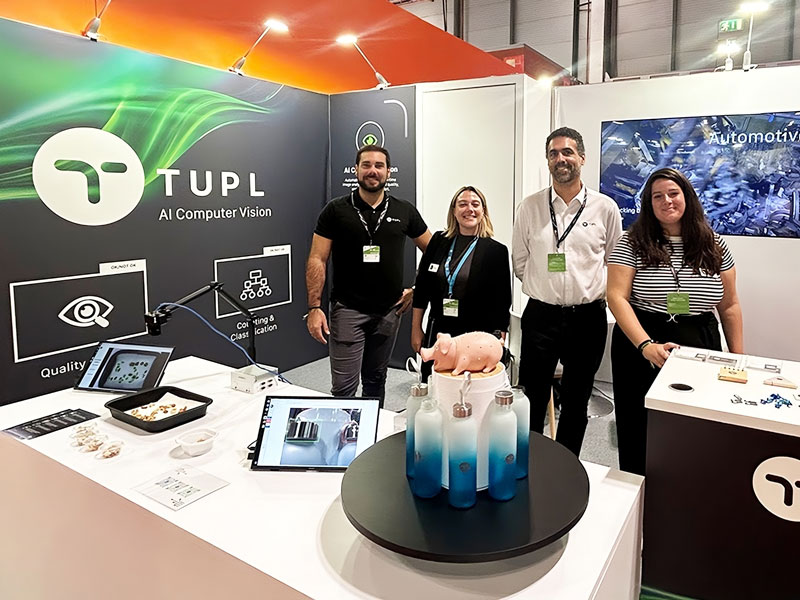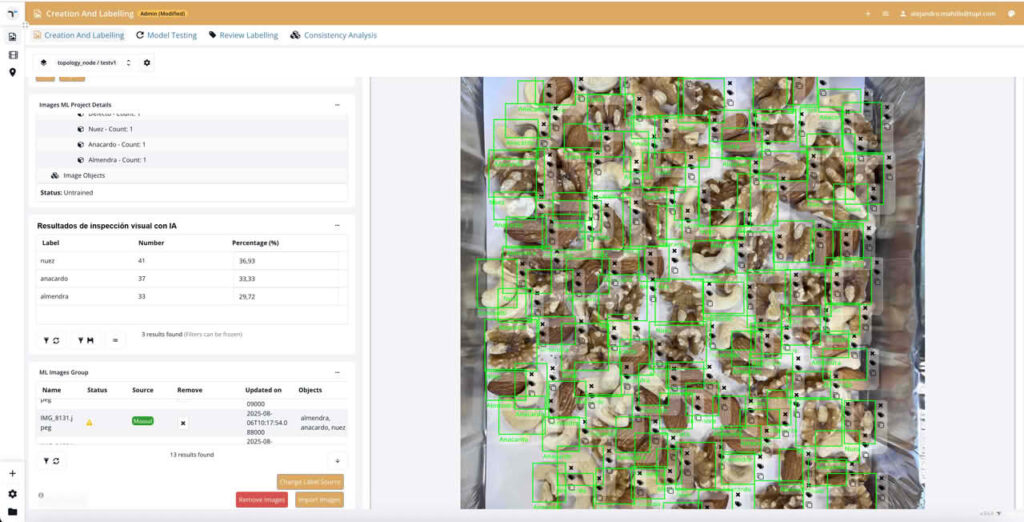
Introduction: Current Trends in Intelligent Telco Networks
As global demand for reliable, efficient, and intelligent telecom infrastructure accelerates, network automation is becoming the cornerstone of transformation across the telecommunications sector. Artificial intelligence (AI), machine learning (ML), and self-operating technologies are driving a shift toward zero-touch, closed-loop automation. These advancements not only reduce operational costs but also improve responsiveness and operational agility. The goal is to streamline increasingly complex network environments and deliver high-quality services with minimal manual intervention.
This article presents key trends in network automation, framed within the TM Forum Autonomous Networks Levels model, and explores how Tupl solutions enable telcos to transition toward truly autonomous operations by embracing explainable AI, intent-based networking, and energy-efficient automation.
TM Forum Autonomous Networks Levels: A Structured Roadmap
To support a clear, industry-aligned progression toward automation, TM Forum defines six levels of network autonomy:
- Level 0: Fully manual operations with no automation.
- Level 1: Assisted operations using tools that provide basic automation support.
- Level 2: Partial automation where specific domains or processes are automated.
- Level 3: Conditional automation, which enables automated responses to predefined triggers.
- Level 4: Highly autonomous networks capable of making complex decisions with limited human oversight.
- Level 5: Fully autonomous networks that operate independently across all domains, responding to real-time inputs and service demands without human involvement.
Each level represents a step toward operational self-governance, allowing telcos to systematically evolve their automation maturity while maintaining control and alignment with business goals. The final goal—Level 5—represents the zenith of telecom automation: a dynamic, intelligent network that adapts in real time to user needs and operational challenges.
The Rise of Autonomous Networks
Recently, autonomous networks in Telco infrastructure have gained substantial momentum due to rising telecom infrastructure intricacies. These networks depend on automated systems for operation optimization to improve their reliability. Closed-loop automation emerges as a key trend in intelligent network automation: the automated system provides real-time operation adjustments by processing continuous data assessments, which results in improved service performance and reduced downtime.
Key Aspects of Autonomous Network Evolution
- Intent-Based Networking: Driving Proactive Optimization
Traditional network operations are primarily reactive, requiring human operators to respond to alarms, investigate issues, and implement fixes. Intent-based networking (IBN) transforms this model by allowing operators to define high-level objectives—such as maintaining quality of service or minimizing energy use—which the system then uses to govern its actions.
These systems leverage a combination of AI analytics and closed-loop control to make real-time decisions aligned with the operator’s intent. For instance, if network traffic surges in a particular region, the system can dynamically reallocate resources to maintain performance without manual intervention. Tupl’s solutions support such responsiveness, providing the foundation for self-optimizing, adaptive networks.
IBN enables network behavior to be goal-driven rather than task-driven, which simplifies policy management and enhances network resilience. By reducing the need for granular manual configuration, telcos can scale more efficiently and focus resources on innovation.
- Explainable AI: Building Trust in Automated Decisions
A common challenge in telecom automation is the “black box” nature of many AI models, which produce results without offering visibility into their decision-making processes. This opacity creates hesitation among engineers who need to validate, trust, and refine those models.
Explainable AI (XAI) addresses this gap by illuminating the reasoning behind automated actions. TuplOS incorporates XAI capabilities that display the factors influencing AI decisions, making it easier for network engineers to audit outcomes and intervene when necessary. This enhances collaboration between human and machine, and ensures AI systems align with operational expertise and business expectations.
With explainability in place, telcos can accelerate AI adoption, streamline troubleshooting, and maintain control over automation deployments. The ability to adjust and retrain AI models based on transparent feedback loops supports long-term system reliability and adaptability.
- Closed-Loop Automation: Real-Time Self-Adjustment
Closed-loop automation refers to a system that continuously monitors network conditions, identifies deviations from expected behavior, and implements corrective measures—all in real time and without human input. This capability is foundational to reaching higher levels of automation.
By ingesting real-time performance data, learning from historical patterns, and applying AI algorithms, Tupl solutions can detect emerging issues before they escalate. For example, if network traffic is detected to be low, the engine automatically adjusts energy saving features to optimize energy use without compromising user experience.
This proactive mode of operation not only improves reliability but also reduces downtime, operational costs, and the burden on human operators. Furthermore, when combined with explainable AI and intent-based networking, closed-loop systems become more intelligent, flexible, and trustworthy.
Sustainability and Business Alignment
Modern telcos must align network operations not only with service-level goals but also with broader business mandates such as cost efficiency and environmental sustainability. AI-powered tools like Tupl’s Power Saving Advisor allow operators to monitor power usage in near real-time and recommend changes to reduce consumption while maintaining performance.
By optimizing energy use across RAN (Radio Access Network), operators can make significant strides toward green operations. Sustainability is no longer optional—it’s a competitive differentiator and regulatory necessity. Automation solutions that address both operational and environmental performance provide long-term strategic value.
Tupl Solutions Enabling the Automation Journey
Tupl provides a suite of AI-powered tools that help telcos progress across the TM Forum autonomy levels. These tools empower operators to shift from reactive, manual tasks to proactive, strategic operations driven by AI and data insights.
- TuplOS: TuplOS acts as the central automation engine, unifying network and IT systems to enable seamless data flow, automation orchestration, and decision-making. It integrates smoothly with operators’ systems and processes, such as existing ticketing systems, providing the backbone for scalable automation.
- Network Advisor: An AI-based assistant that interprets vast volumes of network data to generate strategic business insights. It automates time-consuming diagnostics and recommends actions based on smart prioritization, helping engineering teams to focus on the most relevant issues to enhance both efficiency and precision in the network troubleshooting processes.
- NOC Automation: This solution streamlines operations in NOCs by introducing intelligent protocols that can detect, diagnose, and resolve incidents. It relieves operators of routine monitoring tasks and enables a focus on higher-value activities.
- Power Saving Advisor: Power Saving Advisor is a good example of an autonomous operation approach, as it uses AI to assess power usage across network infrastructure and recommend optimization strategies without the need for human intervention. This not only reduces energy consumption but also aligns with corporate environmental goals.
Together, these solutions provide a practical framework for moving from basic automation toward autonomous, self-optimizing networks. They also enable alignment between operational performance and broader business objectives.
Conclusion
The path to intelligent, autonomous telecom networks requires more than individual technologies—it demands a cohesive strategy, structured evolution, and proven tools. TM Forum’s Autonomous Networks Levels provide the framework, while Tupl solutions deliver the capabilities necessary to progress through that journey.
By embracing intent-based networking, explainable AI, closed-loop automation, and energy-aware operations, telcos can reduce manual workloads, improve reliability, and respond rapidly to shifting network demands.
Autonomous network management is not just a technical upgrade—it is a strategic transformation. With partners like Tupl, telecom operators are better equipped to meet the digital demands of the future and deliver superior service at scale, sustainably and intelligently.
Explore this content with AI:
Table of Contents
Share this post



